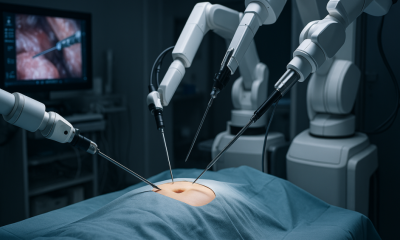Robotics
Bipedal Robot Learns to Run, Travels 5 Kilometers

A bipedal robot developed at Oregon State University and produced by OSU spinout company Agility Robotics has become the first ever to traverse 5 kilometers. Named Cassie the robot, it traveled the route in a little over 53 minutes.
Cassie was developed by robotics professor Jonathan Hurst and colleagues following a 16-month, $1 million grant from the Advanced Research Projects Agency of the U.S. Department of Defense.
Cassie’s Development
First introduced in 2017, Cassie has been in development as OSU students funded by the National Science Foundation have explored new machine learning options. It is the first bipedal robot to utilize machine learning to control a running gait on outdoor terrain, and it can operate untethered and with a single battery charge.
Hurst co-founded Agility back in 2017.
“The Dynamic Robotics Laboratory students in the OSU College of Engineering combined expertise from biomechanics and existing robot control approaches with new machine learning tools,” said Hurst. “This type of holistic approach will enable animal-like levels of performance. It’s incredibly exciting.”
The Robot’s Abilities
Cassie's knees can bend, and the robot taught itself to run through the use of a deep reinforcement learning algorithm. One of the most impressive developments is that Cassie was able to maintain balance while switching positions or being in motion, demonstrating its ability to have dynamic balancing. The robot also learned how to make infinitely subtle adjustments so that it can maintain an upright position while moving.
Jeremy Dao is a Ph.D. student in the Dynamics Robotics Laboratory.
“Cassie is a very efficient robot because of how it has been designed and built, and we were really able to reach the limits of the hardware and show what it can do,” said Dao.
Yesh Godse, an undergraduate in the lab, was also involved in the work.
“Deep reinforcement learning is a powerful method in AI that opens up skills like running, skipping and walking up and down stairs,” said Godse.
According to Hurst, walking robots will eventually become much more common, similar to an automobile. They will also have a large impact on society, but their advancement has been delayed by a lack of understanding in the science of legged locomotion. However, new research such as this propels the field forward.
Real-World Uses
The first robot to ever reproduce human walking gait dynamics was ATRIAS, which was developed in the Dynamic Robotics Laboratory. ATRIAS was followed by Cassie and Agility’s humanoid robot named Digit.
“In the not very distant future, everyone will see and interact with robots in many places in their everyday lives, robots that work alongside us and improve our quality of life,” Hurst said.
Hurst also says that these bipedal robots will eventually have the intelligence and safety capabilities to help individuals in their own home.
Cassie’s 53-minute, 5K run followed two falls. The first was due to an overheated computer, and the second was because the robot had to execute a turn at too high of a speed.
Other advancements with Cassie include the ability to walk up and down stairs.
The paper was presented at the Robotics: Science and Systems conference that took place between July 12-16.











